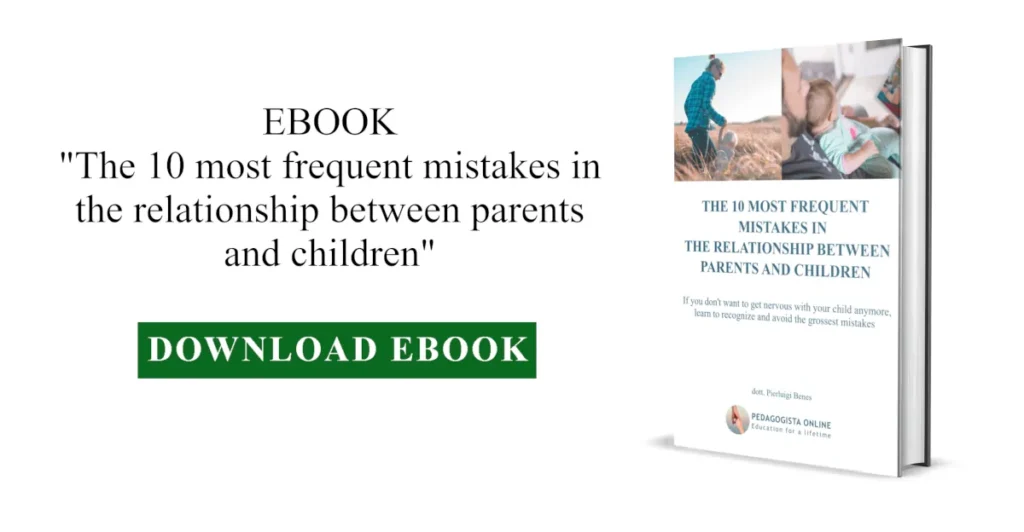Have you recently become a mom or dad and are facing the first challenges of parenthood? Your life has changed enormously compared to before your baby was born, and now you have to deal with some rather complex tasks.
You have a lot of doubts about how to raise the newborn, and neither you nor your partner have any certainties about the correctness of your way of handling the baby, and you don’t know who to turn to.
You’ve tried asking other parents, but you’ve received very conflicting opinions, so you keep asking yourselves the same questions: When should I put the baby to sleep? Should I keep him in our bed or in his nursery at night? Is it right to hold him often, or will he develop bad habits? What if I spoil him too much?…
Know that all parents around the world ask themselves questions about how to raise a newborn; even someone like me who has specific training in this regard.
Let me reassure you right away; in the following paragraphs, you will find some interesting guidance to understand how to answer all your questions. You will be able to develop a strategy that allows you to approach your baby with greater confidence and avoid some glaring mistakes that can be made.
1. If you want to understand how to raise a newborn, ask yourself what upbringing means
The first thing I invite all parents and expecting couples to reflect on is the purpose they intend to give to education. I discuss this specifically in a post that explains this concept, but I especially invite you to read the page I dedicated to the topic “how to be a better parent” where you will find a brief guide on the strategies to apply, and I will show you how to apply them with a newborn here.
In essence, the education of a child can be thought of as encouraging the development of their talents and, therefore, their personal fulfillment. This support is most effective when the parent is capable of observing and nurturing the child’s talents rather than seeking primarily to fulfill themselves through the child.
So, if you understand the purpose you want to give to your child’s education and also believe in seeing it as aid to their development, then we can share a valid educational approach to adopt with a newborn. What I propose is inspired by these principles:
– having a clear staring point: your child, today;
– having a purpose: bring out your child’s talents;
– applying basic pedagogical skills, namely: practice an educational role (or “guidance”); correctly apply the 3 stages of education; provide the child with the appropriate stimuli for their development.
Now, I will show you how to do this, using a very simple example.
2. The starting and ending point of your role as a parent
Your starting point and endpoint are always and only represented by the child. The difference between the two points, therefore, concerns the child: you focus on him today, here and now, and this is what you must be able to observe and understand. This is your starting point.
However, he transforms at a very rapid pace; the small achievements of yesterday are now consolidated skills, and you must continuously look ahead. At no stage of development does the speed of change equal what you can observe in his first months of life.
In this continuous transformation, you often need to adapt to his rhythms and characteristics; you wonder in many cases whether you should lead the child (give him a pace, a rule, etc.) or let him express himself.
The educational function that belongs to you certainly involves a role of “guidance”, but it is not a directive role, you don’t constantly tell your child where to go. Perhaps at the beginning, but I will explain how to best follow his rhythms.
This guiding function is more similar to the activity of a driving instructor, where you teach someone to drive but do not indicate the direction to take. How do you behave to teach someone to drive?
– First, you do “for him”: you show him how to do it by directly driving the vehicle;
– Then you do “with him”: you gradually leave the controls of the vehicle to him but intervene from time to time to take over if he can’t handle it;
– Finally, you are present while “he does”: you leave the autonomous management of the vehicle to him, but you stand by his side to intervene in case of any need.
To carry out this guiding role effectively, you need a purpose, an endpoint; otherwise, you are not able to lead the aspiring “driver” to a goal (learning to drive).
Well, in our case, the goal we can set is to bring out the child’s potential and help him develop it in the best possible way.
Don’t be fooled by appearances: while it’s very easy to observe what an adolescent is capable of, it may seem less evident for a newborn. However, if you approach him with the right sensitivity, you will see that he will tell you day by day who he is and what he needs.
Now that I have clarified these aspects, you can understand and use the strategies that I offer you.
3. How to provide children with the stimulation they need
The strategy to know how to provide the child with appropriate stimuli and not to exceed either extreme consists of working on the “zone of proximal development”: if I give the child a task that is too difficult for him, he becomes discouraged; if I give him a task that is too easy, he gets bored; if I give him a task at his level of competence, he doesn’t grow.
How do I find the right middle ground? The solution is to put the child in a slightly more challenging situation than what he is capable of doing.
Excellent, but now you’ll want to see how to put it into practice with a newborn, in everyday life. Let me tell immediately.
At the beginning, we talked about the most common doubts in a parent of a newborn; among these, for example, there was the issue of sleep. This is one of the most debated topics, on which you will find all sorts of opinions, often diametrically opposed.
Some experts advocate leaving the baby to cry in the crib until he falls asleep; others believe in rushing at the first whimper to avoid distressing him; some pediatricians even urge breastfeeding the baby as soon as he cries to calm him. Who is right? The answer is always one: your baby.
Your baby is your starting point, in his here and now (at 1 month, 2 months, 6 months… 10-15 years, etc.) and with his needs; including the need to be cared for, as in the case of sleep.
Your baby is your endpoint, that is, to help him express his potential (at 1 month, 2 months, 6 months… 10-15 years, etc.), that is: learning to move, exploring the environment, exercising his senses, and so on.
Let’s see how to understand the most appropriate way of behaving through the zone of proximal development:
A) The task is far above his capabilities: if you always let him cry until he falls asleep, he probably stops crying not because he is finally reassured, but because he has realized that no one ever comes to comfort him. It’s not a tragedy, but with this behavior, you are communicating this message; leaving him to himself, he may or may not manage; certainly, we abdicate our “guiding” function.
B) The task is far below his capabilities: if you always keep him attached to yourself and anticipate his cries, you don’t allow him to tolerate small frustrations, even though he can handle them, at least in part. In this way, you don’t even allow him to exercise the abilities he already possesses, let alone bring out others.
C) The task is exactly at the level of his capabilities: if you rush to him at the first whimper, he gets used to being reassured by others, but he doesn’t test himself by trying to do it independently. In other words, he knows he can rely on someone if needed, and this comforts him and makes him feel safer. However, he has no reason to learn to express other abilities.
As I have explained on other occasions, it is very useful to provide him with stimuli that are “slightly” above his current abilities so that he can evolve further.
Therefore, if he is left to cry for a little while before being cared for, this does not harm him in any way; but above all, it helps him look inside himself for the resources to handle the problem on his own, with the abilities he possesses or with others he can discover.
Moreover, once accustomed to resisting for a few moments without the intervention of mom or dad, the baby can be asked to make a little more effort because he is learning to manage stress better.
In light of this, it won’t be me to tell you how quickly you have to run to your baby in the middle of the night; you and him will decide, respecting his need for growth and his need for sleep.












